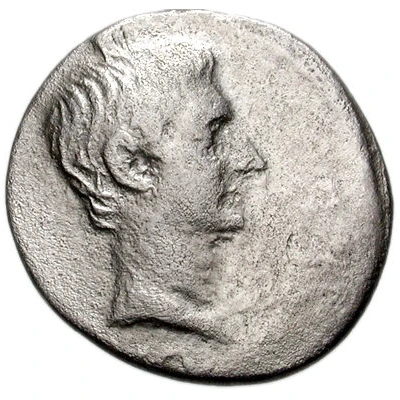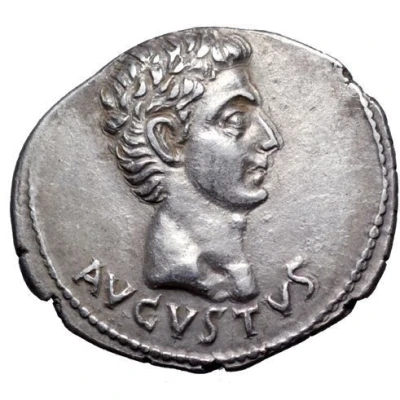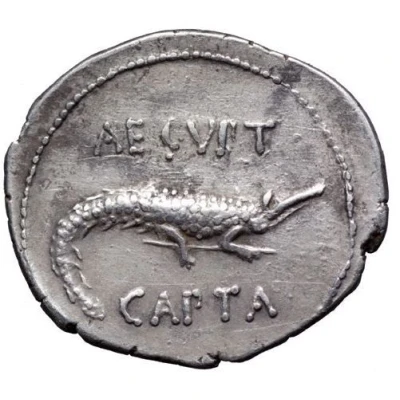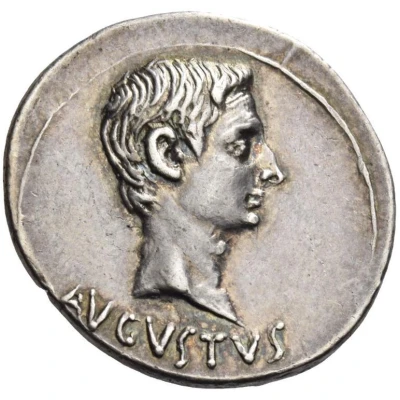
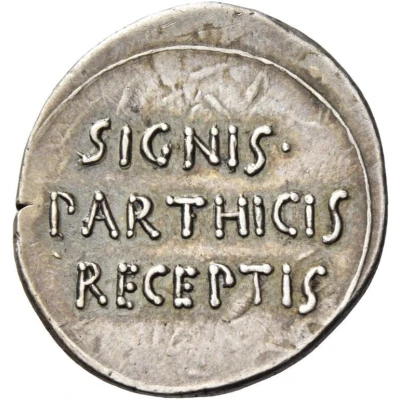

© Numismatica Ars Classica NAC AG
Denarius - Augustus SIGNIS PARTHICIS RECEPTIS 19 BC - 18 BC
| Silver | 3.6 g | 20 mm |
| Issuer | Rome › Roman Empire (27 BC - 395 AD) |
|---|---|
| Emperor | Augustus (Caius Octavius) (27 BC - 14 AD) |
| Type | Standard circulation coin |
| Years | 19 BC - 18 BC |
| Value | 1 Denarius |
| Currency | Denarius, Reform of Augustus (27 BC – AD 215) |
| Composition | Silver |
| Weight | 3.6 g |
| Diameter | 20 mm |
| Shape | Round (irregular) |
| Technique | Hammered |
| Demonetized | Yes |
| Updated | 2024-10-06 |
| Numista | N#248072 |
|---|---|
| Rarity index | 100% |
Reverse
Legend in three lines.
Script: Latin
Lettering: SIGNIS PARTHICIS RECEPTIS
Translation:
Signis Parthicis Receptis.
Standards of the Parthians recovered.
Comment
Source: Online Coins of the Roman Empire (OCRE)Interesting fact
One interesting fact about this coin is that it features an image of Augustus, the first Roman Emperor, on one side, and a depiction of a Parthian prince holding a signum, or military standard, on the other side. This coin was minted during Augustus' reign, which lasted from 27 BC to 14 AD, and it highlights the diplomatic relations between the Roman Empire and the Parthian Empire, which was a powerful state in ancient Mesopotamia. The coin's design celebrates the return of the Roman standards that were lost during the Battle of Carrhae in 53 BC, which was a major defeat for the Roman Republic. The coin's inscription, "SIGNIS PARTHICIS RECEPTIS," translates to "Received from the Parthians," and it refers to the return of these standards. This coin is a significant artifact that provides insight into the political and military history of the Roman Empire during the reign of Augustus.
